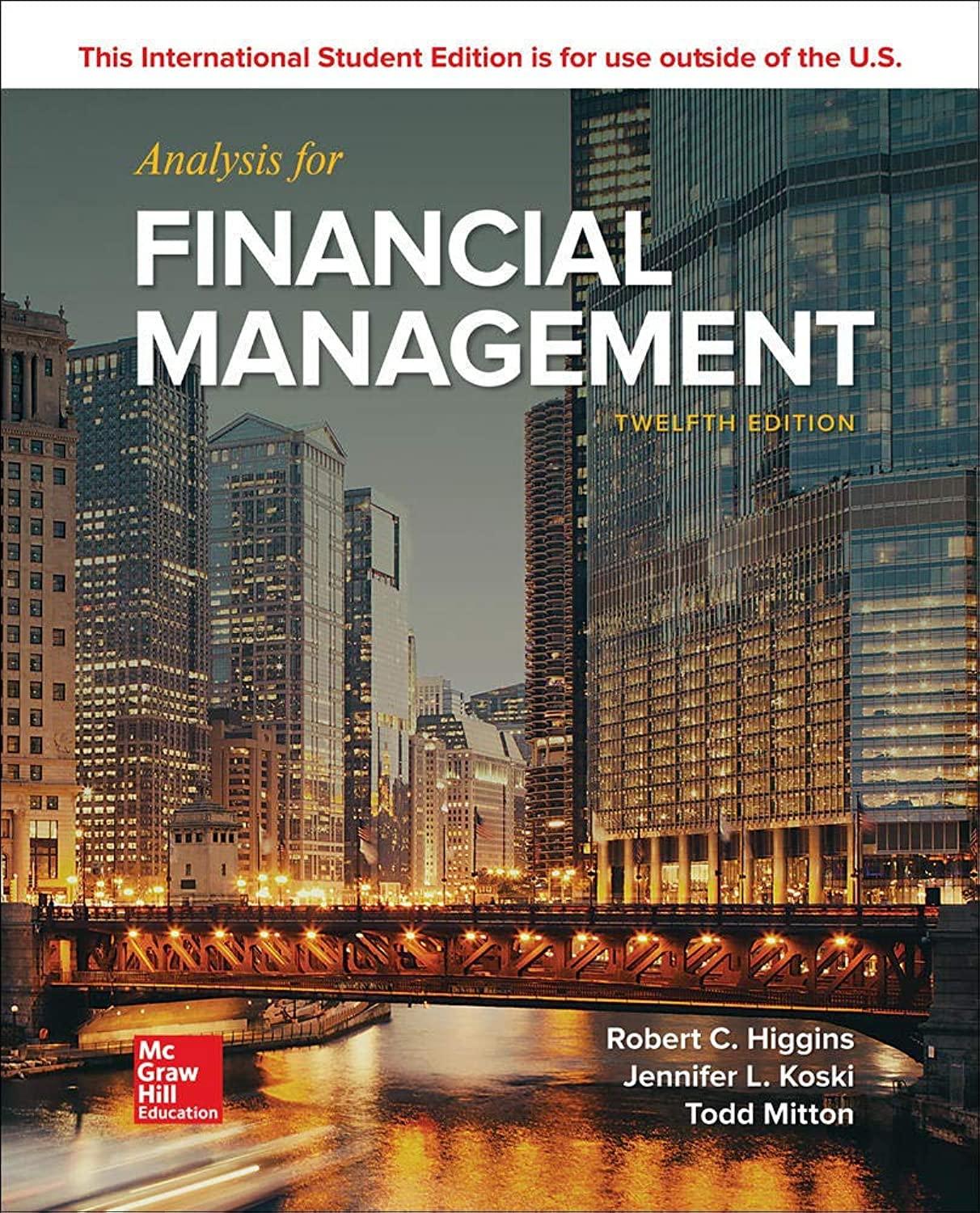Answered step by step
Verified Expert Solution
Question
1 Approved Answer
Starbucks Income Statement Revenue (ttm) 22.39B Revenue Per Share (ttm) 15.44 Quarterly Revenue Growth (yoy) N/A Gross Profit (ttm) 13.35B EBITDA 4.96B Net Income Avi
Starbucks
Income Statement
| Revenue (ttm) | 22.39B |
| Revenue Per Share (ttm) | 15.44 |
| Quarterly Revenue Growth (yoy) | N/A |
| Gross Profit (ttm) | 13.35B |
| EBITDA | 4.96B |
| Net Income Avi to Common (ttm) | 2.88B |
| Diluted EPS (ttm) | 1.98 |
| Quarterly Earnings Growth (yoy) | N/A |
Balance Sheet
| Total Cash (mrq) | 2.69B |
| Total Cash Per Share (mrq) | N/A |
| Total Debt (mrq) | 3.99B |
| Total Debt/Equity (mrq) | N/A |
| Current Ratio (mrq) | N/A |
| Book Value Per Share (mrq) | 4.04 |
 *** already have A. answered.
*** already have A. answered.
| Year 0 | Year 1 | Year 2 | Year 3 | Year 4 | Year 5 | Year 6 | Year 7 |
| $ 2,239,000,000 | $ 2,395,730,000.00 | $ 2,491,559,200.00 | $ 2,591,221,568.00 | $ 2,694,870,430.72 | $ 2,802,665,247.95 | $ 2,914,771,857.87 | $ 3,031,362,732.18 |
The Revenue flow shall be as above for 7% growth in the first year and 4% in subsequent years.
NEED HELP WITH B-G.
You are hired by Starbucks to see if their new project is worthwhile or not. SBUX is considering opening 100 new stores that would represent an increase in sales of 7% (for the first year) over their last year-end figures. Atter the 1st year revenues are expected to grow at a 4% per year They would need to invest on average $300,000 per store. The investment would depreciate in 7 years (use MACRS schedule Table 9-7). After the 5 years, only part of their investment can be sold for S 10,000,000 Net Working Capital to start will be 100,000 per store and then it will be a 10% of the increase of Sales of all 100 new stores. Points 1 a. Estimate the Revenues for the stand-alone (only the project and not for the whole company) for the next 5 years. After the 1st year revenues are expected to grow at a 4%/year. 1b. Estimate the costs of your project A good proxy would be to use the same proportion of Total Costs to Sales of the Company as a whole. (look at the last 10-K report and calculate the common size income statement to look at the costs as a % of sales. Apply the same % to calculate the costs of your project 3 C. Calculate the BITthe next 5 years for the project. 1 d. Calculate the company's Marginal Tax rate (Use table 2.4 from your book as reference) and use this tax rate to calculate the tax effect on your operating cash flows e. Calculate operating and the total cash flows t Using he WAC caloltSNPY 5 f Using the WACC calculated in Part 1, calculate the project's NPV and IRR. Is this something that should be perused? What is the relationship between IRR and WACC? What do these numbers tell you g. What happens if you missed your cost estimate by +10% or-10% of your initial estimate? What is the NPV and IRR of your project. 5 20 You are hired by Starbucks to see if their new project is worthwhile or not. SBUX is considering opening 100 new stores that would represent an increase in sales of 7% (for the first year) over their last year-end figures. Atter the 1st year revenues are expected to grow at a 4% per year They would need to invest on average $300,000 per store. The investment would depreciate in 7 years (use MACRS schedule Table 9-7). After the 5 years, only part of their investment can be sold for S 10,000,000 Net Working Capital to start will be 100,000 per store and then it will be a 10% of the increase of Sales of all 100 new stores. Points 1 a. Estimate the Revenues for the stand-alone (only the project and not for the whole company) for the next 5 years. After the 1st year revenues are expected to grow at a 4%/year. 1b. Estimate the costs of your project A good proxy would be to use the same proportion of Total Costs to Sales of the Company as a whole. (look at the last 10-K report and calculate the common size income statement to look at the costs as a % of sales. Apply the same % to calculate the costs of your project 3 C. Calculate the BITthe next 5 years for the project. 1 d. Calculate the company's Marginal Tax rate (Use table 2.4 from your book as reference) and use this tax rate to calculate the tax effect on your operating cash flows e. Calculate operating and the total cash flows t Using he WAC caloltSNPY 5 f Using the WACC calculated in Part 1, calculate the project's NPV and IRR. Is this something that should be perused? What is the relationship between IRR and WACC? What do these numbers tell you g. What happens if you missed your cost estimate by +10% or-10% of your initial estimate? What is the NPV and IRR of your project. 5 20
Step by Step Solution
There are 3 Steps involved in it
Step: 1

Get Instant Access to Expert-Tailored Solutions
See step-by-step solutions with expert insights and AI powered tools for academic success
Step: 2

Step: 3

Ace Your Homework with AI
Get the answers you need in no time with our AI-driven, step-by-step assistance
Get Started


